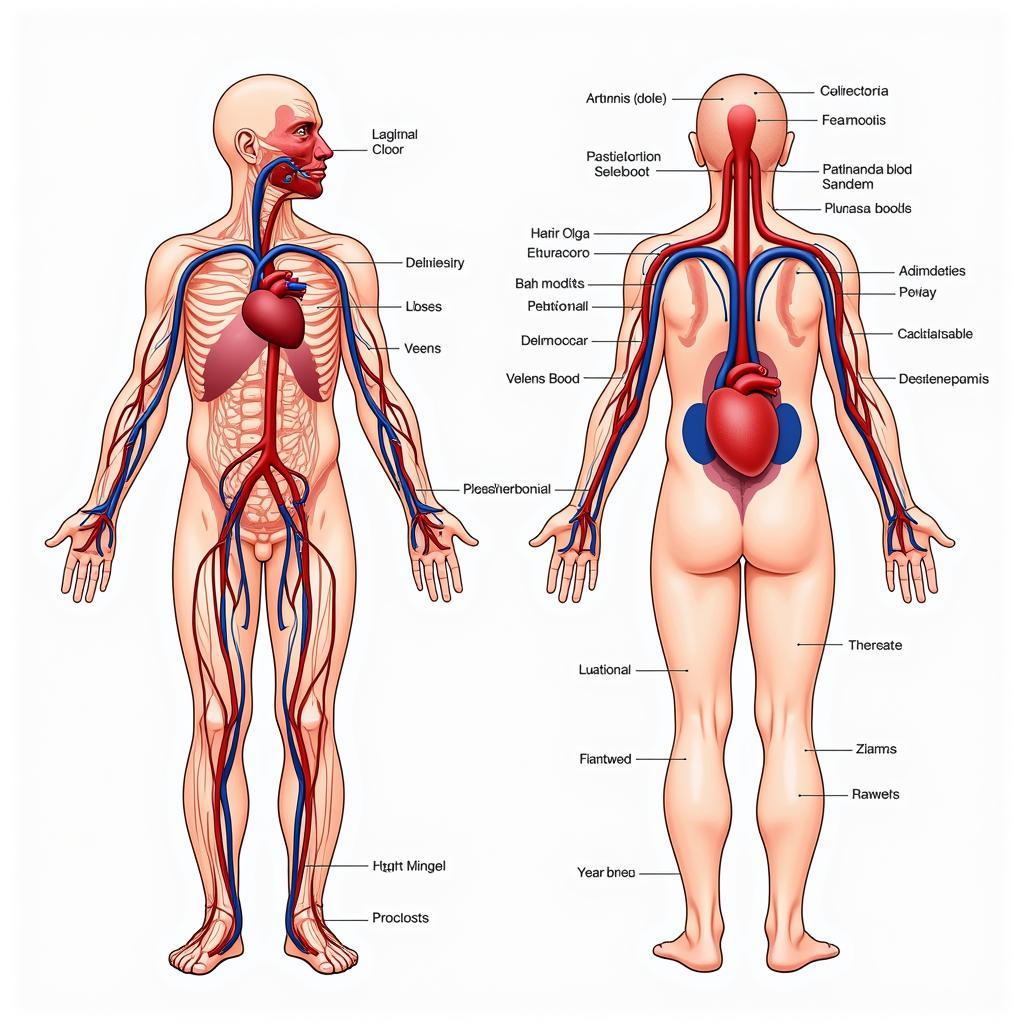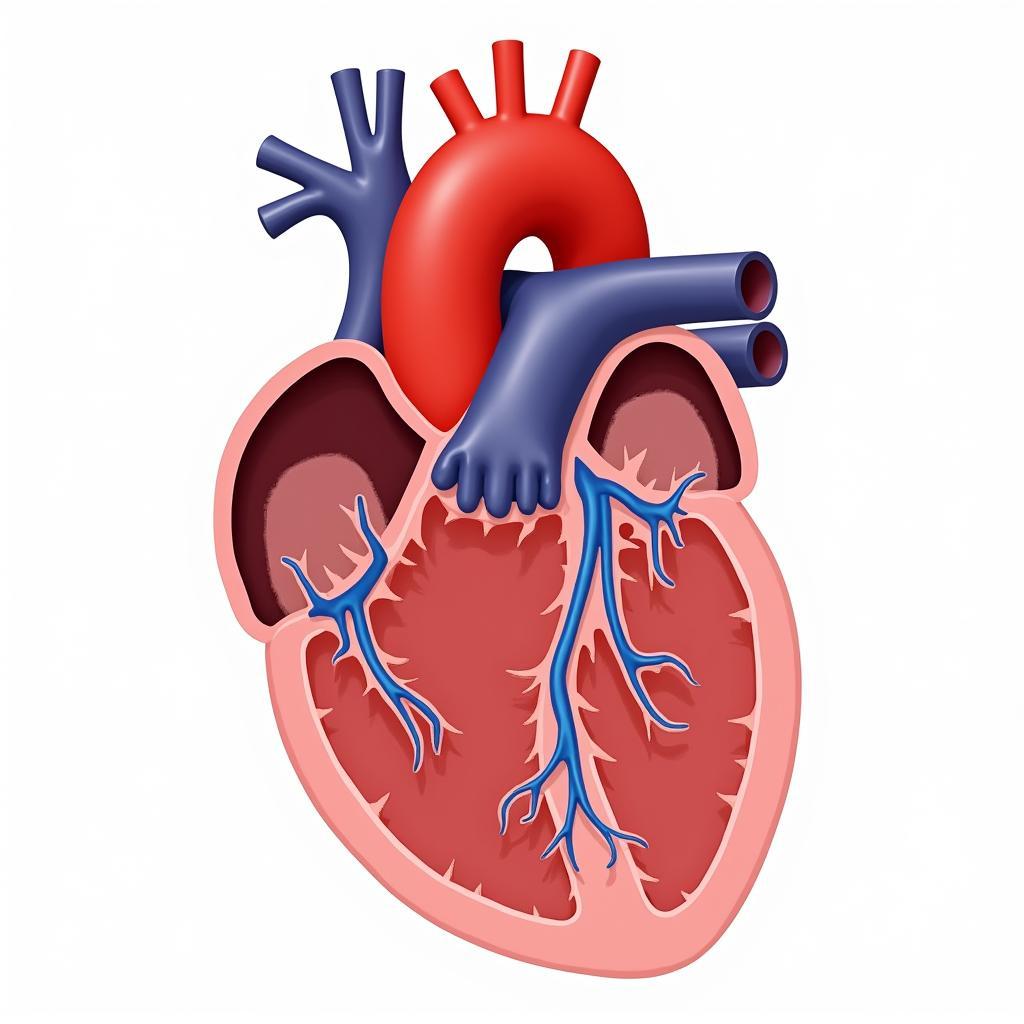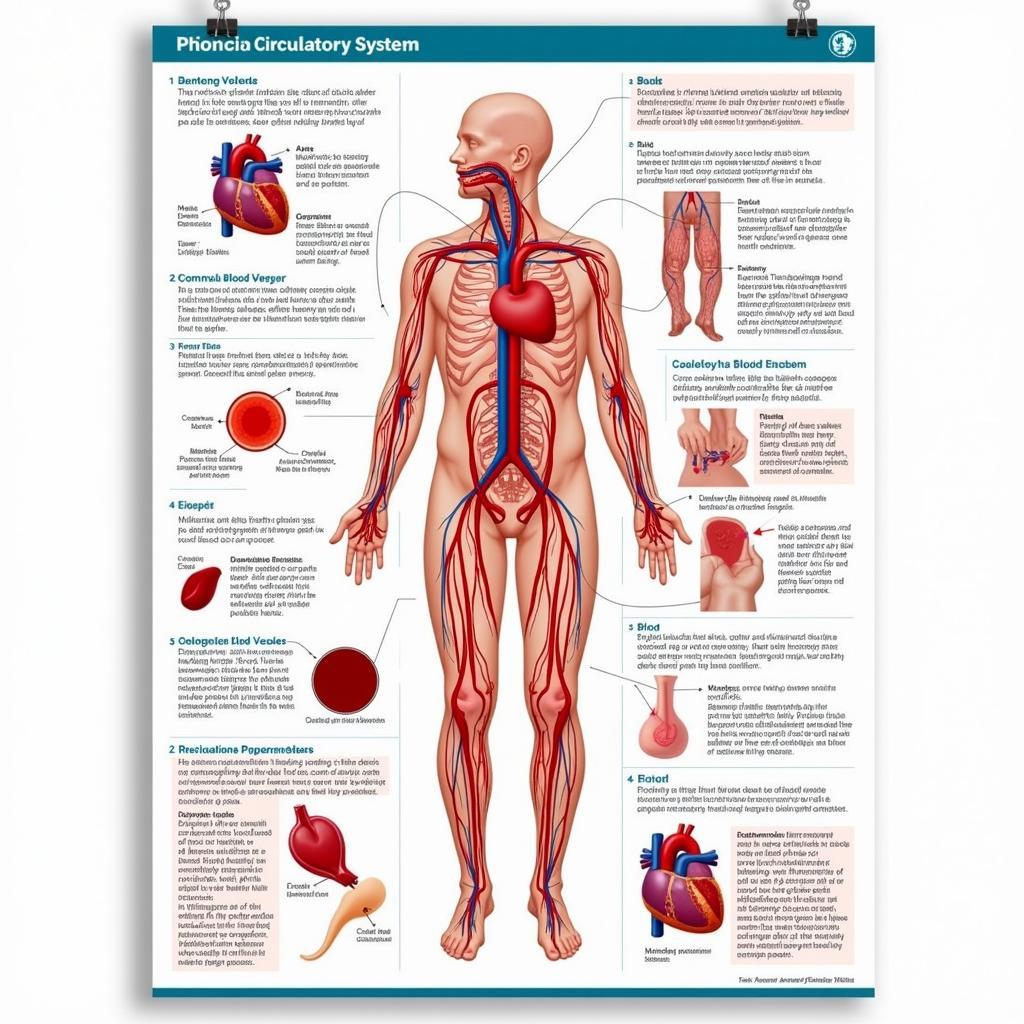Understanding the Circulatory System: A Detailed Guide with Poster
October 17, 2024The circulatory system, also known as the cardiovascular system, is a complex network that transports blood, oxygen, and nutrients throughout your body. It plays a vital role in maintaining life and supporting the function of every other organ system. This article will provide a comprehensive overview of the circulatory system, its components, and its importance for our overall well-being.
Components of the Circulatory System
The circulatory system is composed of three main parts:
- Heart: The heart is a muscular organ that pumps blood throughout the body. It consists of four chambers: the right atrium, right ventricle, left atrium, and left ventricle.
- Blood vessels: These are the channels through which blood travels. There are three types of blood vessels:
- Arteries: Carry oxygenated blood away from the heart.
- Veins: Carry deoxygenated blood back to the heart.
- Capillaries: Tiny vessels that connect arteries and veins, facilitating the exchange of oxygen, nutrients, and waste products between blood and tissues.
- Blood: A specialized bodily fluid that carries oxygen, nutrients, hormones, and other essential substances to the body’s cells and removes waste products.
 Human Circulatory System Diagram
Human Circulatory System Diagram
How the Circulatory System Works
The circulatory system operates through a continuous cycle:
- Deoxygenated blood enters the heart: Deoxygenated blood from the body enters the right atrium of the heart through large veins called the superior and inferior vena cava.
- Blood travels to the lungs: The right atrium pumps the deoxygenated blood into the right ventricle, which then pumps it to the lungs via the pulmonary artery.
- Blood gets oxygenated: In the lungs, blood releases carbon dioxide and picks up oxygen.
- Oxygenated blood returns to the heart: The oxygen-rich blood returns to the heart, entering the left atrium through the pulmonary veins.
- Blood is pumped to the body: The left atrium pumps the oxygenated blood into the left ventricle, which then pumps it out to the rest of the body through the aorta, the largest artery in the body.
This continuous cycle ensures that oxygen and nutrients are delivered to every cell in the body, while waste products are removed efficiently.
Importance of the Circulatory System
The circulatory system is crucial for:
- Oxygen transport: Delivers oxygen from the lungs to the body’s cells and carries carbon dioxide from the cells back to the lungs to be exhaled.
- Nutrient delivery: Transports nutrients absorbed from the digestive system to all body cells.
- Waste removal: Carries waste products from cells to organs like the kidneys and liver for detoxification and elimination.
- Immunity: White blood cells, an essential part of the immune system, travel through the bloodstream to fight infections.
- Hormone transport: Carries hormones from glands to their target organs and tissues, regulating various bodily functions.
 Blood Flow Through the Heart
Blood Flow Through the Heart
Keeping Your Circulatory System Healthy
Maintaining a healthy circulatory system is crucial for overall health and well-being. Here are some tips:
- Regular exercise: Engaging in physical activity strengthens the heart muscle and improves blood flow.
- Balanced diet: Consuming a diet rich in fruits, vegetables, whole grains, and lean proteins supports healthy blood pressure and cholesterol levels.
- Healthy weight: Maintaining a healthy weight reduces the strain on the heart and blood vessels.
- No smoking: Smoking damages blood vessels and increases the risk of heart disease.
- Regular check-ups: Regular visits to the doctor for blood pressure and cholesterol checks are essential for early detection and management of potential issues.
The Role of a Circulatory System Poster
A Circulatory System Poster serves as a valuable visual aid for understanding the complex network of the cardiovascular system. It can:
- Enhance learning: Visual learners can grasp the structure and function of the circulatory system more easily with a detailed poster.
- Aid in education: Posters are effective tools for educators to explain the circulatory system in classrooms, doctor’s offices, and health fairs.
- Promote awareness: A well-designed poster can raise awareness about the importance of cardiovascular health and encourage individuals to adopt healthy lifestyle choices.
 Educational Poster of the Circulatory System
Educational Poster of the Circulatory System
Conclusion
The circulatory system is the body’s intricate transportation network, essential for delivering oxygen and nutrients, removing waste, and supporting overall health. Understanding its components and functions allows us to appreciate its importance and take proactive steps to keep it healthy. Utilizing resources like a circulatory system poster can enhance our understanding and promote awareness about this vital system within our bodies.
For any queries or support regarding your health, please contact our 24/7 customer service team at Phone Number: 0963418788, Email: [email protected], or visit us at 2M4H+PMH, Phường Nghĩa Thành, Gia Nghĩa, Đắk Nông, Việt Nam.